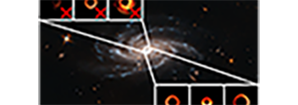Spotlight
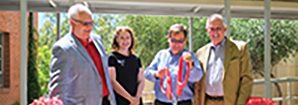
Celebrating 100-Years of Discovery!
Friends of Steward Observatory,
Our thanks to all of you who joined us this past Saturday to celebrate the 100th anniversary of the dedication of the “All American” 36-inch Telescope of Steward Observatory and our recommitment to the research, education, and outreach missions it generated. We hope you had as much fun as we did
The 36-inch, then a “Telescope of Huge Size,” according to the Arizona Daily Star, was built thanks to the philanthropic gift of $60,000 by Lavinia Steward to the University of Arizona. This enabled Andrew Ellicott Douglass, the first Director of Steward Observatory, to build the University’s first major research telescope. This was the start of our growth into a world-class Observatory and Department of Astronomy. It paved the way for other major research facilities at the University, and ushered in an era of transformational philanthropic giving to the University.
Today, in honor of our first century and the philanthropic legacy that shaped it, we ask you to consider making a donation that can stimulate a new century of growth that will make as much history as our first 100 years. Our goal is to secure 100 donations by the end of April 30. We are going to have a time capsule, to be opened on the 200th Anniversary of the dedication, that will have memorabilia from our celebration this past week as well as the names of the donors that participate in this mini-drive — so please consider joining Lavinia Steward among the long line of donors that have enabled us to explore the Universe together.
Sincerely,
Buell Jannuzi and Cathi Duncan
(On behalf of the Committee that Organized our Celebration of the Dedication of the 36-inch Telescope and rededication of Steward Observatory)
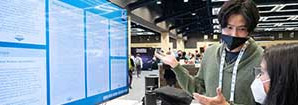
Congratulations to the AAS 241 Chambliss Student Award Winners
The latest Chambliss Astronomy Achievement Student Awards poster competition was a success, and we are happy to announce that four University of Arizona students have been awarded with this distinction! Lori Huseby, a graduate student in Planetary Sciences, was awarded with the Graduate Student Chambliss Award. The following graduate and undergraduate students received an Honorable Mention in the Chambliss competition; Jaren Ashcraft (Graduate Student, Optical Sciences), Michael Hardegree-Ullman (Research Technologist, Steward Observatory), Peter Hartman (Undergraduate Student, Astronomy), Wei Leong Tee (Graduate Student, Astronomy).
According to the American Astronomical Society, the Chambliss Astronomy Achievement Student Awards are given to recognize exemplary research by AAS Undergraduate and Graduate Student Members who present posters at meetings of the AAS. Awardees are honored with a Chambliss medal or, in the case of honorable mention, a certificate.
Congratulations to those students!
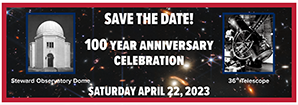
Save the Date! 100 Year Anniversary Celebration
On April 22, 2023 we will re-dedicate the Steward Observatory Dome and 36” telescope which started the 100 year journey to today. We thank Mrs. Lavina Steward for her generous $60,000 donation to the University of Arizona to build the dome and the “first All-American made reflecting telescope”, both are still in use today.
At the dedication in 1923, Dr. Andrew Ellicott Douglass said the following:
“A dedication like this symbolizes the completion of a material part. But a dedication is dual, in being apart material and part spiritual. The material part is the building of brick and steel and glass which you see; the spiritual par is the living human force which enters this Observatory and makes it live. In this ceremony we dedicate ourselves to the perpetuation of this human force, which is nothing less than the soul residing in this physical structure. I want this Steward Observatory to live, and in living it must grow, and in growing it must produce results. Its use for classes is fine; its use for the public is fine; but it will not live without scientific results. That means we must have scientific men [and women] to keep it busy. From time to time, further equipment should be added in order to enlarge human knowledge and suitable publications must present to the world the knowledge acquired here.”
As we celebrate this 100-year milestone, we will honor the great astronomers who have come before us and congratulate the astronomers of today for they continue the spirit of Steward Observatory and will pass this on to the next-generation.
In preparation for the 100th anniversary of the dedication we have refurbished the first floor of the dome. It is now a combination museum, and small (but very deluxe) conference/class room. Initial seed money was provided by Michael Chriss. From there, we added an accessible entrance and completely redecorated the interior. There is a display highlighting E. A. Douglass and the development of the telescope, and we rescued display cabinets originally built for Edwin Carpenter to display artifacts from the history of the observatory. Two large display screens act as programmable displays, and there is a touchscreen kiosk linking to the major observatory activities.
We hope you will join us for this exciting event!
For more information contact: Cathi Duncan, cduncanf@arizona.edu or 520-621-1320
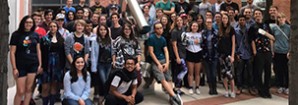
The ATOMM and TIMESTEP Undergraduate Programs
Here are introductions to two relatively recent programs for undergraduates, ATOMM and TIMESTEP, offered by the Dept. of Astronomy/Steward Observatory. For more information about TIMESTEP, please contact Professor Gurtina Besla. For more information about ATOMM, please contact Professor Ed Prather. Permanent links for these programs can be found on the right side of our Undergrad Education page.
The Astronomy Department and The University of Arizona Astronomy Club (full size photo of Astro Club members) would like to draw your attention to free help sessions offered by the Astronomy Tutoring of Majors and Minors (ATOMM) program. ATOMM sessions are held at multiple times throughout the week in the Parker Library, on the 3rd floor of Steward Observatory. Come get help from experienced tutors who are dedicated to assisting you with your homework and course material for: Freshman and Sophomore classes in Astronomy, Physics and Math (including Vector Calculus and Differential Equations), which may not necessarily be offered through other on-campus tutoring services. There may also be students working on upper-division classes in the Parker Library as well. You do not need to be an astronomy major to attend! Parker Library is open as a place to work on homework/study individually or in study groups. Whenever you hit a snag, just come to one of the free ATOMM sessions so we can help.
TIMESTEP is a bi-weekly discussion group about topics of professional development for undergraduates in Astronomy, Planetary Science and Physics at U. Arizona. Topics Include: Discussions about the academic path: how to navigate the undergraduate degree, how to apply for graduate school, how to get a research position, how to present at conferences. Discussions about survival in academia: what is the imposter syndrome, unconscious bias and stereotype threat; topics about diversity and race in academia. Each meeting will involve a short talk followed by smaller discussions facilitated by faculty, postdocs and graduate students, enabling students to network with peers and leaders in their fields
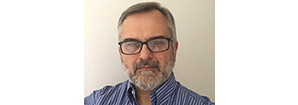
Congratulations Dennis Zaritsky, Professor of Astronomy, named AAAS Fellow by the American Association for the Advancement of Science
Zaritsky, a professor of astronomy, is being honored for his contributions to the field of astronomy, including research that made connections between dark and luminous matter.
"Astronomical research serves to inspire and awaken curiosity in the broader commnity that we hope translates to other sciences, and even beyond science," Zaritsky said. "I hope that the enthusiasm generated by the University of Arizona's astronomy research program continues to get passed on to the students we teach and the general public."
Zaritsky earned his doctorate in astronomy from UArizona in 1991. He returned to UArizona as a faculty member in 1999.
Some highlights in Zaritsky's career include the discovery of direct evidence for dark matter based on his research of colliding galaxy clusters, as well as the discovery of a unifying relationship for the structures of all galaxies.
"The philosophy of the astronomy department has consistently been to support whatever passion project each researcher wants to follow as much as possible," Zaritsky said. "There has always been a tendency to hear, 'How can we achieve this?' rather than, 'Why you can't do this.'"
Newly elected AAAS Fellows will receive an official certificate and a gold and blue rosette pin to commemorate their election. They will be celebrated at a gathering in Washington, D.C., this spring.
Pages

For Public
Public events include our Monday Night Lecture Series, world-reknowned Astronomy Camp and Mt Lemmon Sky Center.

For Students
A good place to start if you want to become an undergrad major or grad student, or need to find our schedule of classes.

For Scientists
Find telescopes and instruments, telescope time applications, staff and mountain contacts, and faculty and staff scientific interests.



